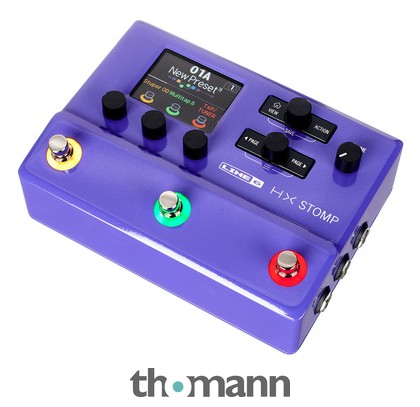- Messages
- 4,600
I'm partial to The Deele song of the same nameEvery time I read the thread title; I read it in the singing voice of Stephen Pearcy to the tune of Body Talk. Which I know makes Alex a happy boy
I'm partial to The Deele song of the same nameEvery time I read the thread title; I read it in the singing voice of Stephen Pearcy to the tune of Body Talk. Which I know makes Alex a happy boy
If you own the real amp and can capture it at your favorite settings there's no problem. Especially if your amps are the kind where you rarely mess with the settings after finding them. I find that I usually adjust at least a bit to accommodate different guitars.I understand that, but realistically how often are people changing the settings on their amps? Out of my 7-8 amps, I can’t think of any where the settings have changed over the last year or more.
It just seems like an excessively broad statement to say modeling is superior for everyone because of that reason. At best we can say it’s a reason why modeling might be better for some folks.
Totally get that. In reality though, I’ve just never had much trouble finding profiles/captures that work for me. If I want more tonal control, I’ll grab a direct capture and rotate out impulse responses, which generally is more effective for me than amp EQ anyway.If you own the real amp and can capture it at your favorite settings there's no problem. Especially if your amps are the kind where you rarely mess with the settings after finding them. I find that I usually adjust at least a bit to accommodate different guitars.
But if you rely on somebody else's captures then you are at the mercy of their preferences or use the available EQ options to tweak those captures, which may sound just fine to you but is not technically accurate to the real amp anymore.
Yeah, that's why on the surface level the Quad Cortex was pretty great because it had both the captures and traditional modeling support so you can just mix and match.Totally get that. In reality though, I’ve just never had much trouble finding profiles/captures that work for me. If I want more tonal control, I’ll grab a direct capture and rotate out impulse responses, which generally is more effective for me than amp EQ anyway.
I really think it comes down to use cases. Those who want absolute control of a tone in the digital realm are better off with component based modeling. Those who want to capture specific sounds (their rig or otherwise) with a very high degree of realism might prefer profiling/captures.
In a perfect world we could have both in the same tech but it doesn’t seem like we are quite there yet.
and particularly for high gain amps, using cheaper reactive load boxes that have weak undefined low end resonance. I love the convenience of load boxes, but for something like profiling, I think it’s worth just blasting your ears out for 5 minutes when reamping and then you have something worthwhile (and more accurate to the real world) to use, rather than a compromised approximation of a real tone.There is a problem with a lot of high gain amp captures where people capture with load boxes and turn the master volume way up, that sounds like compressed diarrhea and there's nothing that can be done afterwards to make it sound good.
That and the complete randomness of gain is what makes sh*tty captures.
Yup, almost punched through my phone screen on "not important" for touchscreen.Did folks check out the latest Helix survey from Line6 (for registered users)?
But it’s not traditional component modeling. The QC “models” are actually captures.Yeah, that's why on the surface level the Quad Cortex was pretty great because it had both the captures and traditional modeling support so you can just mix and match.

Never ever.Siri/Alexa
Not trying to de-rail this ...... but ^^ this completely true.There is a problem with a lot of high gain amp captures where people capture with load boxes and turn the master volume way up, that sounds like compressed diarrhea and there's nothing that can be done afterwards to make it sound good.
That and the complete randomness of gain is what makes sh*tty captures.
Did folks check out the latest Helix survey from Line6 (for registered users)?
Whatever it is underneath the hood, it works the same to the end user, namely you can adjust it like an amp.But it’s not traditional component modeling. The QC “models” are actually captures.


I’ve seen them stateside too (can’t remember where), and I thought about it despite having an XL. The purple is just cool.@kartikg3
If you thought blue was cool…

Line6 HX Stomp purple special
Multi-Effect Pedal Multi-effect processor with the Helix sound, Over 300 effects and models from Helix, M-Series and other Line6 products, 6 Simultaneously usable amp, cabinet and effect blocks - including looper and IR loading, Colour LC display,...www.thomann.de
Revv Purple.Is there an HX amp model that’s like a modern take on a Soldano? Like how Friedman amps are modern takes on Marshals. I love the SLO amp model for lower gain rock tones and ambient Rabea type stuff. Thinking maybe something similar but different will expand my creative possibilities.
